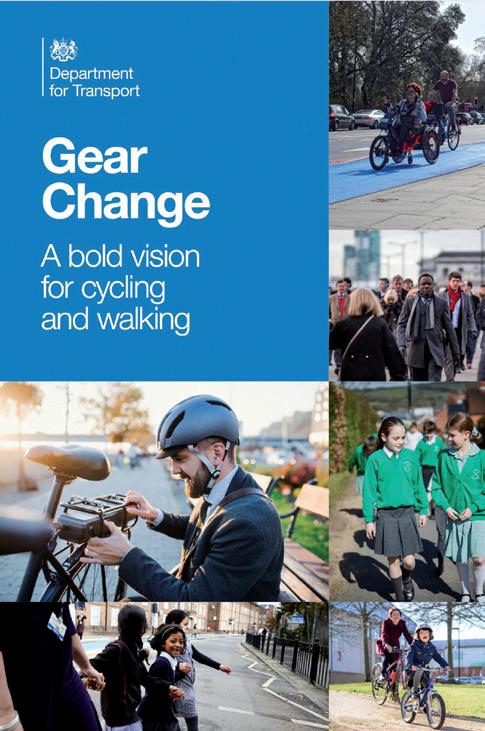
6 minute read
Further Reading
A Transport Strategy for York
York
Civic Trust
York actually has an excellent transport strategy – unfortunately, It’s just not one that originated from our council. In 2022, a group of civic-minded transport and planning experts associated with York Civic Trust published a solidly researched and very detailed 60-page policy document in which cycling features very prominently. Whereas 42 Ways is aimed at the general public, this report goes into the technical details and is for policy makers. York Civic Trust has done the heavy lifting and created an excellent framework for York’s transport strategy. Is anyone listening?
https://yorkcivictrust.co.uk/ home/planning/a-transportstrategy-for-york-2022/
Gear Change
UK
Government
In case you are still not convinced, here is the definitive statement from the UK government on why cycling is essential to the future of society and what they propose to do about it. Two and half years on from publication we are still waiting for action.
https://assets.publishing. service.gov.uk/government/ uploads/system/uploads/ attachment_data/file/904146/ gear-change-a-bold-visionfor-cycling-and-walking.pdf
LTN 1/20 https://www.gov.uk/ government/publications/ cycle-infrastructure-designltn-120 Gear Change one-yearon review.
Bike Nation: How Cycling Can Save the World

Peter Walker
If you are looking for a short and to-the-point summary of the benefits of cycling to us all, this is the best place to start. Peter Walker is a London-based political journalist with a sideline in transport and cycling. Written from the perspective of someone who cycles daily in a big city, this powerful and compelling book shows how cycling really can save the world. It does what is says on the tin.
Happy City

Charles Montgomery
This is a brilliant book with a broader focus that is all about the good life and living well in cities. Montgomery gathers his knowledge from a truly global perspective, drawing inspiration from cities, rich and poor, from Bogota to Copenhagen. Unsurprisingly cycling plays a big part in all of this! We have tried to make the point in 42 Ways that cycling is about so much more than transport, summed up in the quote on page 3: “bicycles are the indicator species of a health community, like shellfish in a bay.” This book pulls all the threads together and shows how with a clear vision, strong civic leadership and the right mix of policies, the good stuff begins to happen.
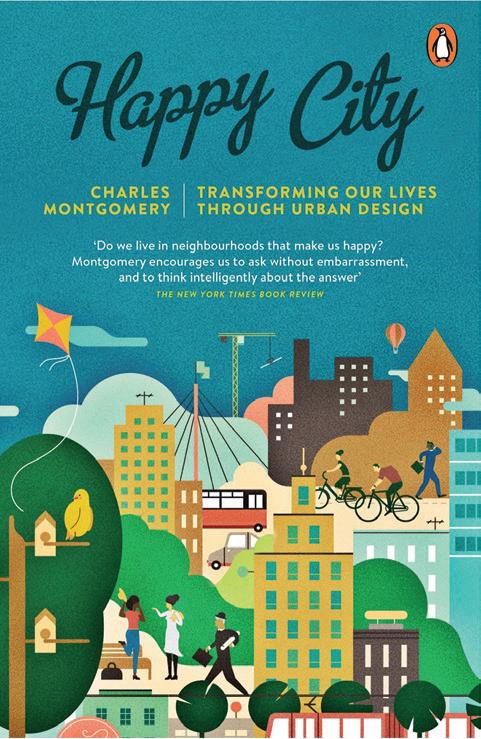
Movement
Thalia Verkade and Marco te Brömmelstroet
Subtitled “how to take back our streets and transform our lives,” Movement brings the focus right down to street level and asks some basic questions of who do streets belong to, what do we get to use them for and who gets to decide? We take it for granted that the streets are designed for movement from A to B, but the authors explore what happens if we radically rethink how we use these public spaces. Verkade and Brömmelstroet live in the most advanced cycle culture on the planet, so they have much to share, but make it clear that we are all asking the same questions and looking for similar answers.
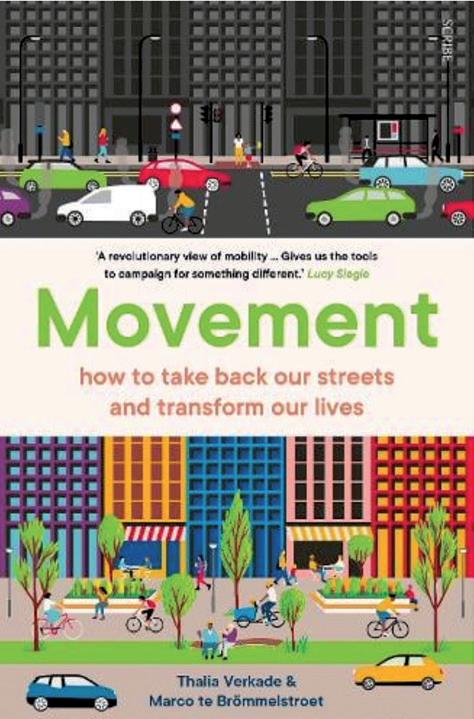
Curbing Traffic. The Human Case for Fewer Cars in our Lives Building the Cycling City: The Dutch Blueprint for Urban Vitality

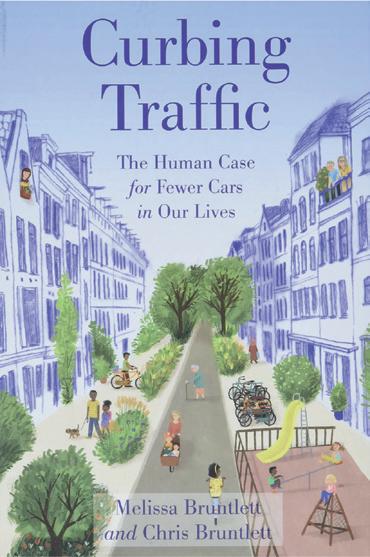
Melissa
& Chris Bruntlett
Two volumes from this couple who upped sticks from their native Canada and emigrated to the Netherlands to live the dream. Building the Cycling City sets out the case for cycling using the Dutch model with an emphasis on transport policy, planning and design, focusing on how to create urban vitality. Curbing Traffic covers the why of it all. The story of their first two years in Delft provides the backdrop for how this city, like many others in NL, succeeded in creating more humane spaces. The book examines the social and psychological impacts of automobile domination and what happens for the better when we start to reduce their prevalence. The emphasis is on why cities and towns designed for people are so important for our individual and societal health and well-being.
The Death and Life of Great American Cities
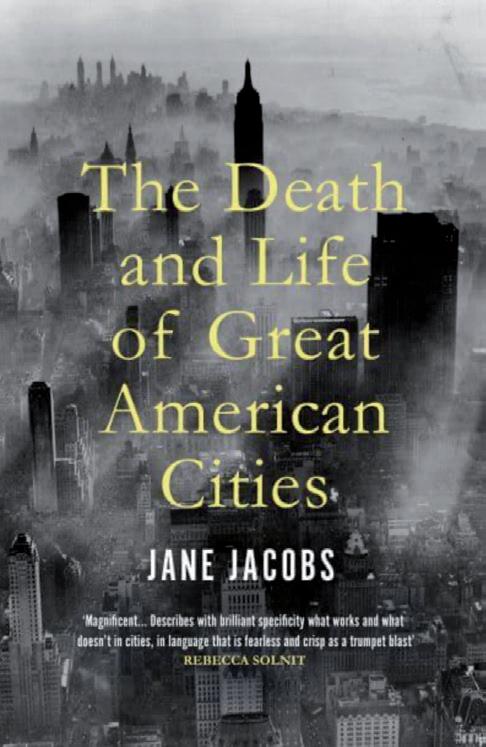
Jane
Jacobs
A classic. We’ll go with Wikipedia on this one: “a critique of 1950s urban planning policy, which it holds responsible for the decline of many city neighbourhoods in the United States. The book is Jacobs’ best-known and most influential work. Jacobs was a critic of ‘rationalist’ planners of the 1950s and 1960s… She argued that modernist urban planning overlooked and oversimplified the complexity of human lives in diverse communities… She instead advocated for dense mixed-use development and walkable streets, with the “eyes on the street” of passers-by helping to maintain public order.” Worth reading for its glorious extended opening passage about a day in the life of her then neighbourhood and for her take on the good urban life. Still relevant today.
Cities for People
Jan Gehl
Jan Gehl is one of the foundational thinkers in the field of urban design and has probably directly or indirectly influenced every author on this list. Much of his early work was spent observing, in minute detail, how people use public spaces, so his ideas are founded on solid observational social scientific research. In time, the scope of his work widened to ask bigger questions: what are cities for – if not for people – and come to highlight how cities designed to accommodate high traffic volume have created a paradox of urban environments that alienate the communities they ostensibly seek to serve. One for people who want to get into the technical detail, as one review has it “there is an undoubtedly textbook feel to Cities for People... At the same time, this is a book of interest and relevance beyond the profession and the academy. It should be placed on the desks of all bureaucrats responsible for urban and transport planning policy and will resonate with general readers.”
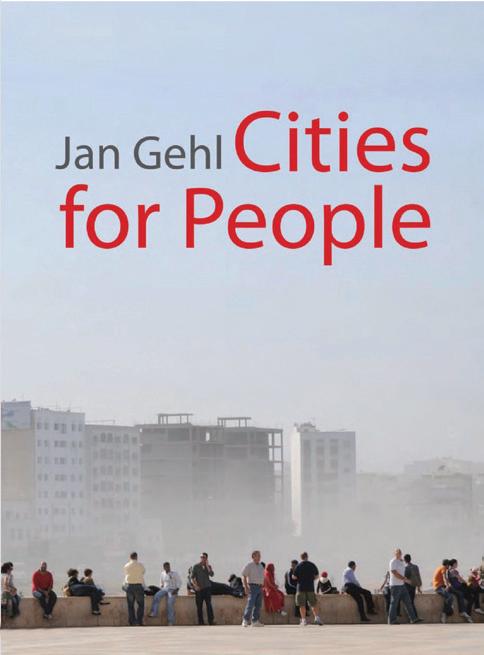
Endnotes
Section i
2. Make cycling easy to make people happy and healthy
On support for better cycling provision: ( e.g. 64% of respondents support “the creation of dedicated cycle lanes in your local area, if this means less road space for cars”) https://www.gov.uk/ government/statistics/national-travel-attitudesstudy-wave-5/national-travel-attitudes-studywave-5
On cycling for health and happiness: Harms et al. (2017), Stabiele beelden verdiept; trends in beleving en beeldvorming van mobiliteit. [In-depth look at stable images; trends in perception of mobility]. The Hague, Netherlands Institute for Transport Policy Analysis.
3. Boost cycling to save the city centre...
Literature review on the economic benefits of cycling: https://www.gov.uk/government/ publications/the-value-of-cycling-rapidevidence-review-of-the-economic-benefits-ofcycling
4. …and boost the economy
On cost/benefit ratios of bikes vs. cars (figures converted from Euros based on exchange rate at the time of writing): Decisio (2016), Waarde en Investeringsagenda Fietsen Verantwoordingsrapportage [Justification report on the social value of and investment agenda for cycling]. Amsterdam: Decisio.
Section ii Introduction
The UK Government’s design guidance for cycle infrastructure states that “networks need to be coherent, direct, safe, comfortable and attractive”: https://www.gov.uk/government/publications/ cycle-infrastructure-design-ltn-120
19. Provide for people with no access to a car
On household access to a car: https://www.gov. uk/government/statistics/national-travelsurvey-2021
By social group: https://www.health.org.uk/ evidence-hub/transport/transport-trends/ trends-in-households-without-access-to-a-car
20. Provide for low income households
On transport poverty: https://www.theguardian. com/uk-news/2023/jan/09/entrenched-carculture-leaves-millions-of-britons-in-transportpoverty
Section iv
27. First…get a strategy
York’s LTP3 has not been updated since 2011: https://www.york.gov.uk/LocalTransportPlan.
City of York Council might do well to take a look at the following: https://yorkcivictrust.co.uk/home/ planning/a-transport-strategy-for-york-2022/ 30. Put your money where your hierarchy is The concept of induced demand is well understood, but not widely known. A simple introduction: https://www.bloomberg.com/ news/articles/2018-09-06/traffic-jam-blameinduced-demand
UK government reports on induced demand: https://bettertransport.org.uk/wp-content/ uploads/legacy-files/trunk-roads-traffic-report. pdf https://assets.publishing.service.gov.uk/ government/uploads/system/uploads/ attachment_data/file/762976/latest-evidenceon-induced-travel-demand-an-evidencereview.pdf
32. Learn to accept congestion
Historic traffic growth in York: https:// roadtraffic.dft.gov.uk/local-authorities/202
Projected growth: https://assets.publishing. service.gov.uk/government/uploads/system/ uploads/attachment_data/file/873929/roadtraffic-forecasts-2018-document.pdf
34. Use a workplace parking levy to boost active travel
Nottingham parking levy: https://www. nottinghamcity.gov.uk/wpl
51% of people living in York travel less than 5km to work, of which 24% travel less than 2km. https://www.nomisweb.co.uk/census/2011/ QS702EW/view/1946157112?rows=rural_ urban&cols=cell
35. Reallocate road space from private to public use
On parking: https://www.racfoundation.org/ wp-content/uploads/standing-still-NaglerJune-2021.pdf
36. Introduce home zones for all of York’s residential areas
Infographic: https://www.transformativemobility.org/assets/publications/Street-Trafficand-Social-Interaction_2021-09-01-095423_ cufd.pdf. After Appleyard et al. (1981). Liveable Streets, Berkeley: University of California Press.
Appendix 2: The Dirty Dozen
1. Cars emit gaseous pollution
York air pollution reports: https://www.york. gov.uk/AirPollutionReports
2. Cars generate particulate pollution https://theconversation.com/air-pollutionfrom-brake-dust-may-be-as-harmful-asdiesel-exhaust-on-immune-cells-newstudy-129594
3. Cars cost us all 12bn per annum: https://www.statista.com/ statistics/298667/united-kingdom-uk-publicsector-expenditure-national-roads/. £200 per person in the UK, funded through general taxation, yet roughly only half the population has a driving licence: https://www.ethnicityfacts-figures.service.gov.uk/culture-andcommunity/transport/driving-licences/latest
4. Cars make for sedentary lifestyles
Sedentary health costs in the UK: £0.8 bn pa in 2016: https://pubmed.ncbi.nlm.nih. gov/30910857/
5. Cars kill people daily
Five a day: https://www.gov.uk/government/ statistics/reported-road-casualties-greatbritain-road-user-risk-2021/reported-roadcasualties-great-britain-road-user-risk-2021-data
Leading cause of death for people aged between 15-29: https://www.rvtrust.org.uk/wp-content/ uploads/2022/01/RVT_AnnualReport-12-21.pdf
Around 80k casualties per annum: https://maps. dft.gov.uk/road-casualties/index.html
Summary: https://www.brake.org.uk/getinvolved/take-action/mybrake/knowledgecentre/uk-road-safety
7. Cars produce carbon Greenhouse gas emissions from transport: https://www.ons.gov.uk/economy/ environmentalaccounts/articles/ roadtransportandairemissions/2019-09-16. Embodied carbon: https://www.brusselsblog. co.uk/carbon-emissions-in-the-lifetimes-ofcars/
8. Cars widen social inequality https://www.sd-commission.org.uk/pages/ fairness-in-a-car-dependent-society.html
9. Cars create noise pollution https://www.eea.europa.eu/highlights/roadtraffic-remains-biggest-source
On links with dementia: https://www. theguardian.com/society/2021/sep/09/ transport-noise-linked-to-increased-risk-ofdementia-study-finds
10. Cars encourage aggressive behaviour Road rage: https://www.rac.co.uk/drive/ features/the-menaces-on-our-roads-2019/ https://news.sky.com/story/sharp-rise-in-roadrage-crimes-with-victims-stabbed-punchedbitten-and-spat-at-12141096
11. Cars undermine community life https://uwe-repository.worktribe.com/ output/968892/driven-to-excess-impactsof-motor-vehicles-on-the-quality-of-life-ofresidents-of-three-streets-in-bristol-uk
12. Cars steal land https://www.data.gov.uk/dataset/af896cab79ee-43c2-a3cb-3a1198b97f52/car-parks https://www.knightfrank.com/research/ article/2020-07-15-government-owned-carparks-could-hold-the-key-to-110000-new-homes https://aseasyasridingabike.wordpress. com/2012/09/04/the-effect-of-private-cardependence-on-land-use/






